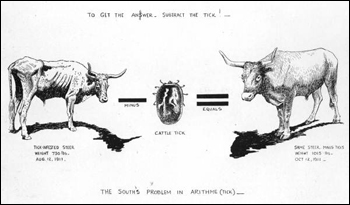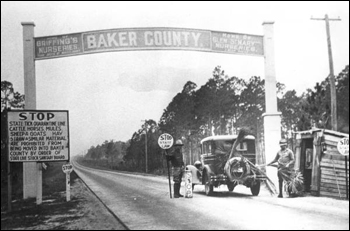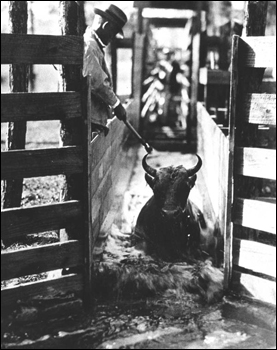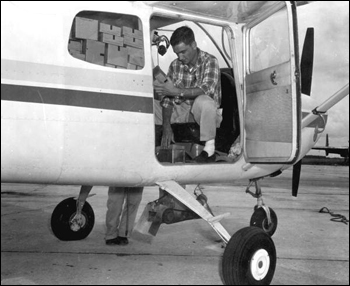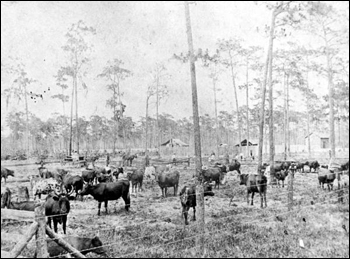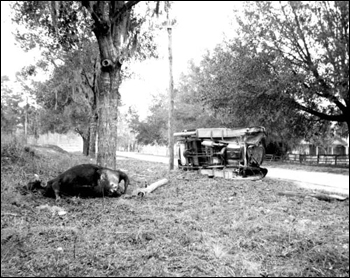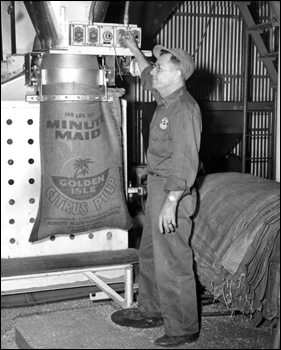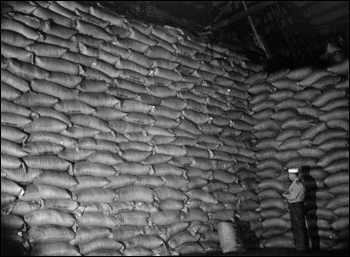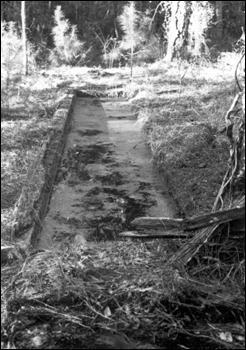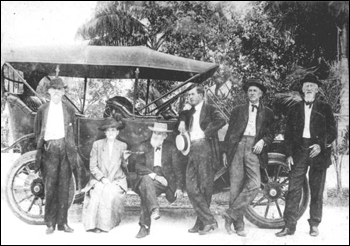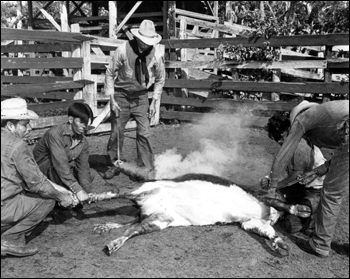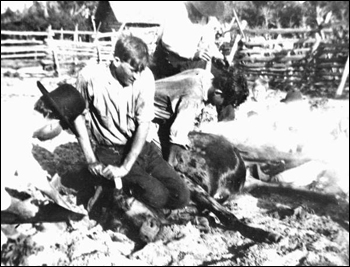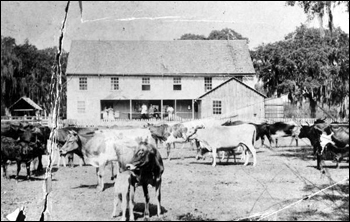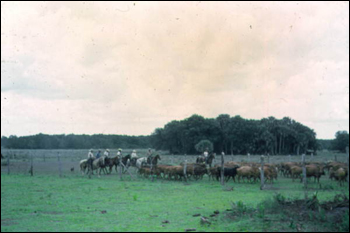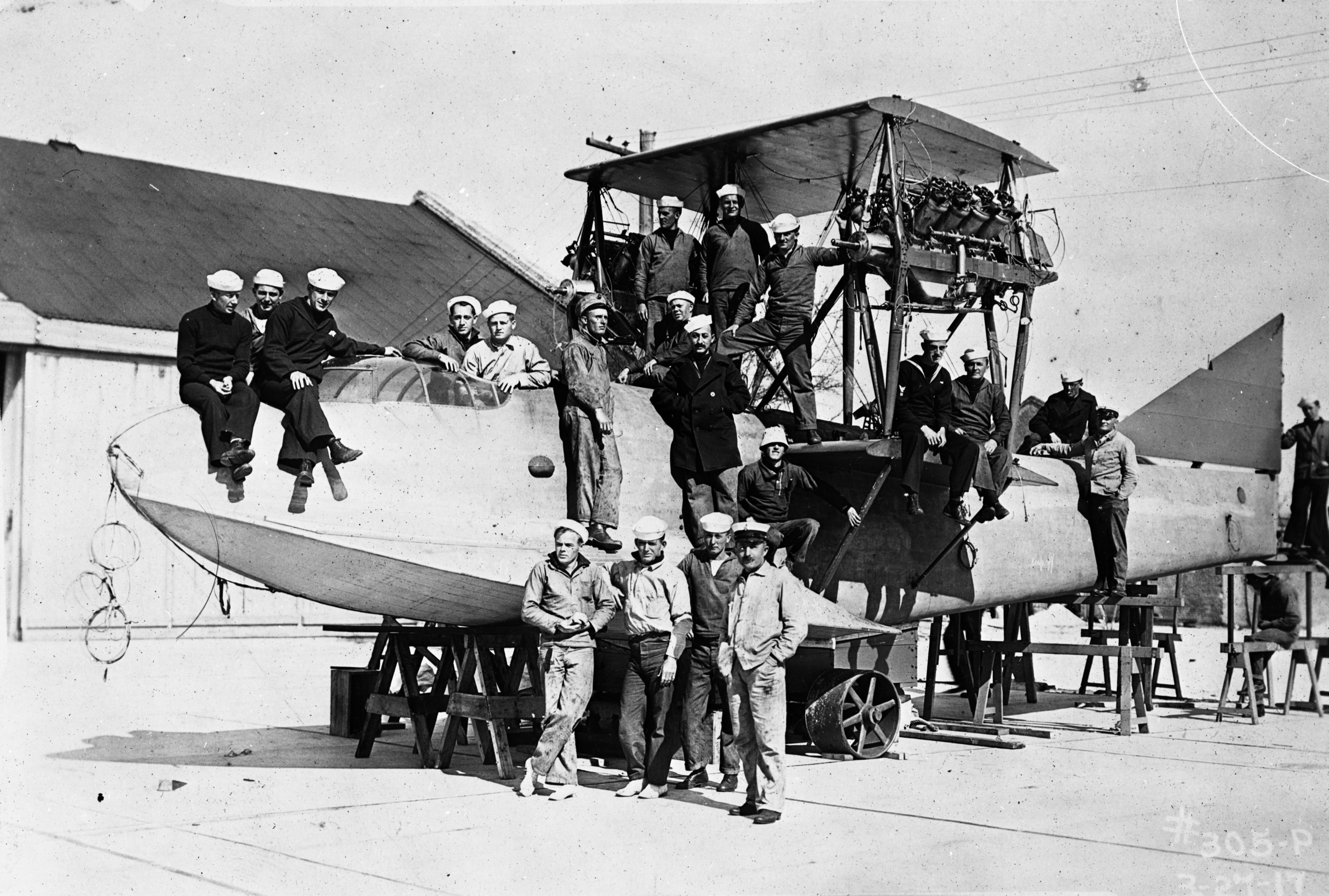Photo Exhibits
Photo exhibits spotlight various topics in Florida history, and are accompanied by brief text intended to place selected materials in historical context.
Florida Cattle Ranching
From Cracker Drives to Industry: Modernization of Ranching in Florida
Effects of ticks on cattle (1913)
Image Number: PR01404
Tick inspection station at the Baker County line
Image Number: PR01403
Probably from early 1900s. There was a problem with ticks spreading disease in cattle at that period.
Duval County man dipping and paint marking cattle (1923)
Image Number: PR01396
20th Century: Ranching Modernizes
The 20th century brought changes affecting cattle ranching infrastructure and occupational traditions. As Cuban demand declined early in the century, ranchers turned to domestic markets and cattle were shipped by rail throughout the country.
Modern technology brought many positive changes. As early as 1858, ranchers attempted to improve the quality of their herds with Brahman cattle, originally from India. Since the 1930s, ranchers have successfully cross-bred native cattle with Brahman, Angus, Hereford, Shorthorn, Charolais, and Limousin to improve size, resistance to heat and insects, hardiness, and meat quality. This led to the development of hybrids such as the Braford and Brangus breeds.
Ranchers struggled with and overcame severe insect pests, such as Texas ticks and screw-worms, through medical and scientific research. In the early 1900s, Texas tick fever entered Florida with cattle from other states. By the 1920s, the State Livestock Board made it mandatory for ranchers to construct vats and dip cattle in an arsenic solution every two weeks. Although expensive and difficult, the effort curbed the problem. Fencing became widespread in order to separate treated from untreated animals. The fever re-surfaced in 1935 and 1960, resulting in intense eradication programs implemented by Florida's Department of Agriculture.
Pilot prepares boxes of sterile screwworm pupae to be dropped on a cattle ranch : Sebring, Florida (1958)
Image Number: C028500
450 sterile screwworm pupae are packed into a paper box "bomb" to be dropped on a cattle ranch by plane.
First barbed wire fencing in Osceola County : Kissimmee, Florida (c. 1910)
Image Number: RC11287
Cow killed by an automobile: Volusia County, Florida (192-)
Image Number: RC11290
Cattle feed produced from Minute Maid Company's citrus pulp (195-)
Image Number: RC15569
Cattle feed made from pulp membranes, seed, and rind discharged during the manufacture of concentrate has converted a disposal problem into a profitable operation for the Minute Maid Company.
Cattle feed piled up in Kuder Citrus Feed Company's warehouse : Lake Alfred, Florida (1946)
Image Number: C004004
Remains of a 1922 dipping vat, near Natural Bridge: Leon County, Florida (1980)
Image Number: RC11298
Seminole Cattle Ranching
The Seminoles' relationship with cattle has endured for centuries. Prior to their arrival in Florida and subsequent designation as Seminoles, Creek Indians in Alabama and Georgia were engaged in cattle production. By 1740, the followers of the Oconee Creek leader, Cowkeeper, established Florida's largest settlement in the Alachua area. Heavily involved in a cattle economy, by 1775 the Seminoles were working 7,000 to 10,000 head of cattle on Paynes Prairie using trained cow dogs.
Continued aggressions between the Seminoles and European-American settlers over cattle and grazing lands contributed significantly to starting the Second (1835-1842) and Third Seminole Wars (1855-1858), which reduced the Seminole population to around 200.
After the Civil War, Seminole families in Big Cypress and around Lake Okeechobee raised cattle despite harassment by rustlers. In the early 20th century, cattle posed such a liability that few Seminoles raised them. Without strife over rangelands, the Seminoles and Cracker cattlemen got along well. Ranchers sometimes hired Seminoles, whom they considered to be excellent cattlemen.
A new era of Seminole cattle ranching began in the 1930s, when the Dania and Brighton Seminoles acquired starter herds. The Seminole Tribe established the Indian Livestock Association in 1939. In 1944, they created separate cattle enterprises for Brighton and Big Cypress, with the Central Tribal Cattle Organization providing general supervision. Seminoles banded with other Native American stockmen in 1974 to form the National American Indian Cattlemen's Association.
Today, the Seminole Tribe is one of Florida's leading beef producers. Sophisticated video auctions promote tribal cattle across the nation. The success of the cattle program has allowed the Tribe to pursue other successful economic ventures.
Hendry family: Fort Myers, Florida (c. 1920)
Image Number: RC02939
L-R: George Washington Hendry, brother to Captain Hendry and County Judge; Mary Jane Hendry Blount, sister of Captain Hendry; William Marion Hendry, brother to Captain Hendry and first postmaster of "Myers" as well as a state representative from Polk County and a clerk of the circuit court of Lee County; James Edward Hendry, Jr.; James Edward Hendry, Sr., son of Captain Hendry and first Lee County treasurer; Captain Francis Asbury Hendry, "Cattle King of South Florida" (he was a state senator, served as one of the first Lee County commissioners, and was a state representative for Lee County from 1893 to 1904). In the background is a 1909 Cadillac.
Seminole Indian cowboys marking and branding a calf in the corral during round-up: Brighton Reservation, Florida (1950)
Image Number: C014304
Branding in Lake County (c. 1910)
Image Number: PR01407
Captain F. A. Hendry's home at Fort Thompson with cows in yard
Image Number: PR03317
Cowboys driving cattle (1961)
Image Number: PR01420

 Listen: The Folk Program
Listen: The Folk Program